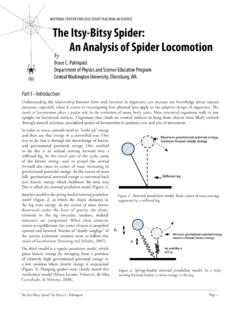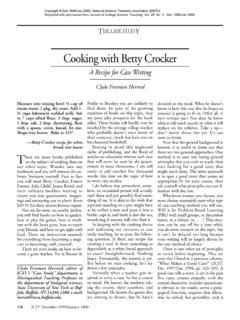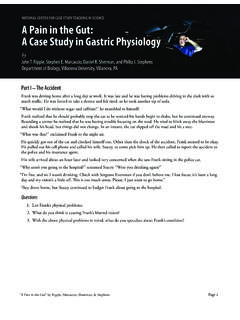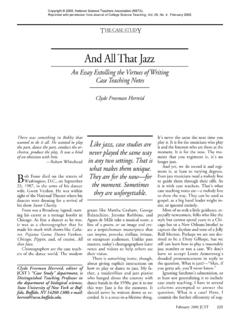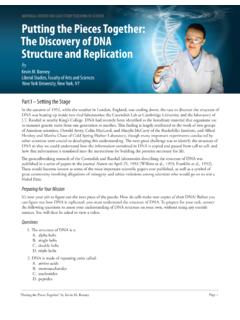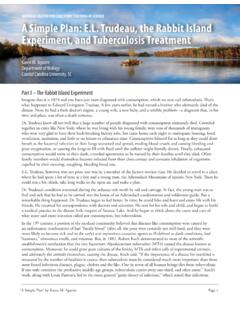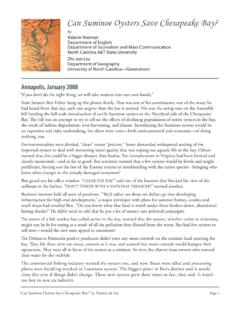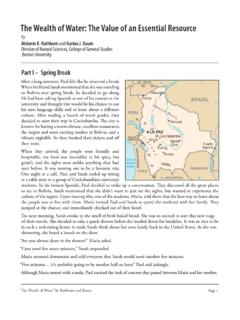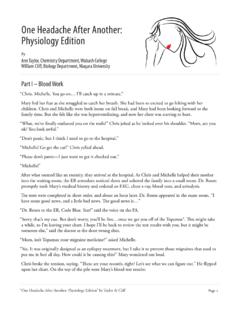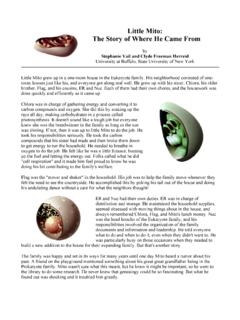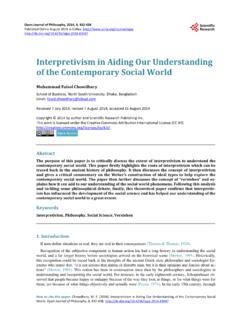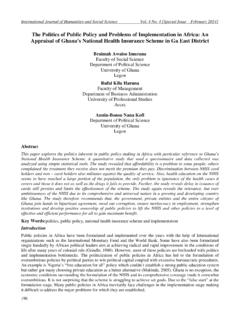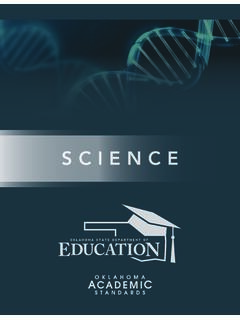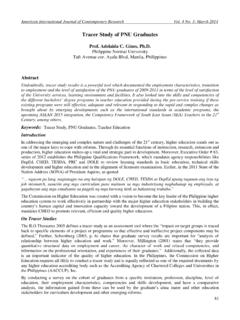Transcription of Copyright © 2014, National Science Teachers Association ...
1 75 Vol. 44, No. 1, 2014A Chat With the survey monkey : case studies and the Flipped ClassroomBy Clyde Freeman Herreid, Nancy A. Schiller, Ky F. Herreid, and Carolyn B. WrightOur lives are filled with polls and surveys. We are asked to participate in dozens every year. We all face the same onslaught. There are pollsters everywhere. It is part of modern life and the ubiquitous pres-ence of phones and the crushing on-slaught of the electronic juggernaut, leading us to be wary of anyone approaching with a clipboard in a neighborhood mall or a stranger at a table hailing with a hearty greeting in an airport especially at election time, when everyone has their own polling agency and spins the results in their own inimitable style.
2 And we can t just be part of a poll; we have to be enlightened with the results. We are then bombarded with statistics on our computer, on our iPad, and from nattering nabobs on television. Nowhere are we safe from intrusion, be it in our bedroom or bath. And you are not safe in this essay either. For we are here to tell you the results of a survey that we posted for folks who regularly peruse the website of the National Center for case Study Teaching in Science (NCCSTS). We asked faculty about their use of case studies and videos in their General Biology classrooms. We think the results are enlightening because General Biology is arguably the course most commonly taught to students in high schools and college.
3 And the flipped classroom is the hot-test ticket in prompted our interest in all of this is that we submitted a suc-cessful grant proposal to the National Science Foundation making the ar-gument that case study teaching is now one of the favorite methods of Science , technology, engineering, and mathematics (STEM) Teachers because it engages students with real-world problems. It promises to help overcome the disenchantment found in 60% of the STEM students who choose to leave the disciplines. According to an editorial in Science by Gates and Mirkin (2012), three factors are responsible for the attri-tion: uninspiring introductory courses (86% of Science faculty use lecture as their primary mode of teaching), difficulty with the required math, and an unwelcoming academic culture in STEM.
4 One of the major innova-tions in the college STEM classroom developed to help correct this situa-tion is case -based learning (Herreid, 1994), which teaches scientific con-tent, concepts, and skills in a real-world, problem-solving context that provides the kind of active, student-centered learning called for in Vision and Change (American Association for the Advancement of Science , 2011). In fact, Gates and Mirkin rec-ommended that the federal govern-ment catalyze widespread adoption of active learning approaches using case studies , problem-based learn-ing, peer instruction, and computer simulations (p.)
5 1545).As much as we favor case study teaching (Herreid, 2007), there are some critics who have argued that it uses too much class time. Faculty who are concerned with the coverage issue say they can t afford to turn over a class to a case study because they won t be able to get through the material that they believe is essential or is mandated. Faculty making this assertion often ignore two important facts, of course: (a) many students who have suffered through the lec-ture method still receive Ds and Fs or withdraw the method clearly doesn t work for them, and (b) you can still get coverage without the teacher having to say it all out loud; there are other ways to get s where the flipped class-room comes in.
6 The classical flipped approach advocates that Teachers give the students homework that cov-ers the essential material habitually presented in lecture, then when class time rolls around, the teacher has time for practical exercises such as case studies , games, contests, prob-lem solving, etc., which reinforce the key points of the material. Thus, the approach flips the normal classroom pedagogy on its head, reversing the usual procedure of lecture first, homework let s be clear about this: There is little new about this ap-proach. Ever since the invention of the printing press, countless Teachers have implored their charges to read case STUDYC opyright 2014 , National Science Teachers Association (NSTA).
7 Reprinted with permission from Journal of College Science Teaching, Vol. 44, No. 1, Journal of College Science Teaching case STUDYthe chapter in the book ahead of time, often to no avail. Additionally, this approach is the centerpiece of team learning, developed by Larry Mi-chaelsen, where students are given reading assignments before class, and then in class they encounter indi-vidual quizzes, group quizzes, and fi-nally case studies (Michaelsen, 1992, 2002). Herreid (2002, 2004) has described the successful use of Mi-chaelsen s method in STEM courses. Just-in-time teaching (JiTT) requires significant student preparation too.
8 Students are required to accomplish web-based assignments that are due shortly before class. The instructor reads the student submissions and ad-justs the classroom lesson to suit the students needs. Class time is spent dealing with questions and intro-ducing material on a need-to-know basis (Novak, Patterson, Gavrin, & Christian, 1999; Simkins, Maier, & Rhem, 2009). Hybrid courses and blended courses (Buzzetto-More & Sweat-Guy, 2006; Wu, 2010) have students learning their subject mat-ter via a combination of traditional classroom interactions and some form of internet-based learning.
9 These and related methodologies, cooperative learning (Slavin, 1990), collaborative learning (Dillenbourg, 1999), and process-oriented guided inquiry learning (Farrell, Moog, & Spencer, 1999; Hanson & Wolfskill, 2000) share some of the same advan-tages and challenges. Like the flipped classroom, all of these methods allow instructors to cover principles, facts, and terms as part of out-of-class stu-dent preparation and use classroom time to engage in active learning exercises in which they apply what they have what s new about the flipped method is this: We now have the in-ternet, YouTube, and a host of other websites like the Kahn Academy and Bozeman Science that provide high-quality short videos that cover key concepts in STEM education.
10 In less than 10 minutes one can see an animation video of the differences in mitosis or meiosis, an explanation of DNA replication, or how the planets move. A student can look at these repeatedly. When made well, these videos appeal to a crop of students who are immersed daily in a vi-sual culture with high entertainment value. There are two clear problems however. The first is how to get the students to watch and learn from these sources. This problem is often solved by giving short exams either online or in the classroom before the classroom exercises begin. The second problem is that not enough FIGURE 1 Topics covered in General Biology classes by case study 44, No.
